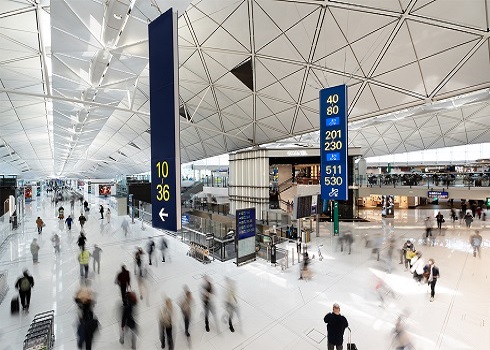INTERNATIONAL. Private-label fast-moving consumer goods (FMCG) continue to increase their share of the global marketplace, spearheaded by the European market. And the growth of the refrigerated food category points strongly to “a “˜premium’ private-label strategy by retailers”, according to the Power of Private Label 2005 Executive News Report by researcher ACNielsen.
Private-label goods comprise 17% of total value sales for the 12 months ending the first quarter of 2005, up from the 15% figure reported in a similar ACNielsen study published in 2003.
The report, based on data gained from 14 product areas containing 80 categories in 38 markets, also suggested that private label more than doubled the growth rate of manufacturer brands, up +5% compared with +2% for manufacturer brands. “In more than two-thirds of the markets studied, the value sales grew faster than manufacturer brand counterparts,” it said.
The following table shows private label market share and growth rates across key product categories for the 12 months ended 31 March 2005.
PRODUCT AREA | PRIVATE LABEL SHARE | PRIVATE LABEL GROWTH | PRODUCT AREA | PRIVATE LABEL SHARE | PRIVATE LABEL GROWTH | ||
| 1 | Refrigerated food* | 32% | +9% | 8 | Non-alcoholic beverages | 12% | +3% |
| 2 | Paper, plastic and wraps (PPW**) | 31% | +2% | 9 | Home care | 10% | +2% |
| 3 | Frozen food | 25% | +3% | 10 | Snacks & confectionery | 9% | +8% |
| 4 | Pet food | 21% | +11% | 11 | Alcoholic beverages | 6% | +3% |
| 5 | Shelf-stable food | 19% | +5% | 12 | Personal care | 5% | +3% |
| 6 | Diapers & feminine hygiene | 14% | -1% | 13 | Cosmetics | 2% | +23% |
| 7 | Health care | 14% | +3% | 14 | Baby food | 2% | +13% |
* Refrigerated foods contain such categories as milk, cheese and complete ready meals ** Paper, plastic & wraps contain such commodity-perceived categories as aluminium foil, paper towels and plastic wraps Source: ©2005 ACNielsen | |||||||
Europe leads the way
Europe continues to dominate the market share of private-label value sales, with a 23% share across 17 markets and a growth rate of +4%.
As found in the 2003 ACNielsen Executive News Report, the top five markets by share of value sales are Switzerland (45%), Germany (30%), the UK (28%), Spain (26%) and Belgium (25%).
Although achieved from a smaller base, emerging markets such as Croatia, the Czech Republic, Hungary, Slovakia and South Africa saw the fastest private-label growth rate of +11%.
Asia Pacific and Latin America did not achieve the same double-digit growth rates as in the emerging markets. These regions have the least price difference between private label and manufacturer brands, according to the report.
North America maintained a high share of 16% and achieved a significant growth rate of +7%.
The rise of premium private label
Refrigerated foods* tops the private-label FMCG list with growth that has more than tripled that of paper, plastic & wraps** (see table).
The rise “confirms a steady trend in the private-label strategy of retailers worldwide: pushing private-label products into premium segments that go beyond the low-price/high-volume commodity-driven practices of the past”.
“Strategically, retailers worldwide seem to be placing more and more of an emphasis on branding and marketing their private-label wares to match the lifestyles and values of their shoppers,” said Bienvenido C. Niles Jr, President of ACNielsen Asia Pacific.
“Although retailer concentration correlates with strong private-label development, in most Asia Pacific markets where retailers are highly concentrated, the share of private label is still relatively low.”
Nearly everyone buys private-label goods
Nearly everyone buys private-label goods. The report said 100% of households in two-thirds of the 14 markets reviewed had purchased private-label goods during the past year. The lowest penetration level was an impressive 77% in Singapore. Share of purchases skewed only slightly more towards lower income and larger families.
“If you look at private-label brands’ prices globally, they are about a third lower than the manufacturer brands, and that difference narrows to 25% in Asia Pacific, which is much less when compared with other regions like emerging markets (40%) or Europe (37%),” said Niles.
Retailer concentration correlates with strong private-label development; The US is the only exception among top ten private-label countries |
 |
“If you look at private-label brands’ prices globally, they are about a third lower than the manufacturer brands, and that difference narrows to 25% in Asia Pacific, which is much less when compared with other regions like emerging markets (40%) or Europe (37%),” said Bienvenido C. Niles Jr, President of ACNielsen Asia Pacific ©2005 ACNielsen |
Retailers could expand private label successfully
While private label still commands only 17% of the global marketplace, in some markets it is far higher. In Switzerland, the share of value sales is 45%.
The report suggested that retailers worldwide could continue the expansion of private label. A separate ACNielsen global study conducted in May 2005 across 38 markets indicates that more than two-thirds of consumers either slightly or strongly agreed with the statement that “private-label brands are a good alternative to other brands”.
Niles observed: “Just how far retailers can grow private label will be the centre of much industry debate. Whether worldwide shares will reach those of Switzerland, or even if high share markets like Switzerland have reached their peak, is yet to be seen.”
Note: ACNielsen collected retail measurement sales data from 38 markets across five regions, namely Europe, North America, the emerging markets, Asia Pacific and Latin America. The markets represent over 60% of the world’s gross domestic product (GDP), and were chosen as areas where there was an established private-label presence.
To find out more on the services offered by ACNielsen China, contact Helen Rong, ACNielsen China at +86 21 5385 5000 ext. 637; fax +86 21 5385 5261; email: helen.rong@acnielsen.com; website: www.acnielsen.com.cn.
MORE STORIES ON PRIVATE LABEL AND ACNIELSEN SURVEYS
Abu Dhabi Duty Free prepares to take major plunge into owned product business – 06/10/05
Outbound tourists and male consumers catch advertisers’ eyes in China – 27/09/05
ACNielsen survey offers key insights into in-store marketing to Chinese consumers – 06/07/05





